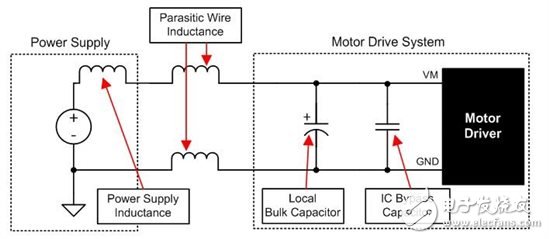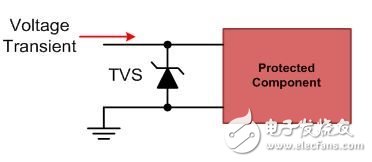3 ways to prevent electrical overstress (EOS) in motor drive systems
There is a saying that great engineers not only find problems, they are better able to solve problems.
In the last post I wrote about this series about hot questions and answers, I explained what electrical overstress (EOS) is, how it affects integrated circuit (IC) components, and the motor drive system (based on The content mentioned, this is the common EOS source in the "problem". One of my colleagues has introduced power pumping, a common EOS source. However, what steps can you take to prevent EOS (what is the "solution")? In this blog post, I will introduce some of the more common methods that system designers can use to prevent EOS or protect devices in motor drive systems from EOS.
Make a margin when designing
One of the most common ways to design a system with sufficient operating margin without in-depth and exhaustive study of protection mechanisms and devices.
I will give an example here. An AC/DC converter generates 24V power for a simple brushed DC motor drive system. The DRV8701 H-bridge gate driver and the CSD18509Q5B power MOSFET drive a brushed DC motor and are powered directly from 24V.
In the ideal case, the supply voltage of the 24V power supply is 24V. In a real-world environment, this 24V voltage will vary due to different load conditions, motor parasitics, and regenerative current. An understanding of the change in supply voltage allows you to select components with the right voltage rating. In motor drive systems, it is common to leave a margin of 2 times the component rating. In Figure 1, the DRV8701 supports voltages up to 45V, while the CSD18509Q5B supports voltages up to 40V to withstand supply voltage variations and transients.

Figure 1: Brushed DC motor drive system
Use large capacitors
There is also a common method that I call a "universal" large-capacity capacitor. This method can be as simple as it sounds, or complex, requiring different large capacitor sizes to be customized to generate a detail simulation to resolve parasitic effects and motor response. Large-capacity ceramic or electrolytic (large) capacitors provide a local charge reservoir. The bulk capacitor allows the system to provide the charge required in the load step or to provide the generated charge externally during motor regeneration without excessive voltage transients. Figure 2 is a local bulk capacitor.

Figure 2: System with large capacitance values
In almost all motor drive systems, a certain amount of large capacitance is used. Of course, the size of the capacitor depends on the particular system. Some of the determinants are:
The highest current required for the motor system.
The capacitance value and power supply capability of the power supply.
The amount of parasitic inductance between the power supply and the motor system.
Acceptable voltage ripple.
The type of motor used (brushed DC, brushless DC, and stepper motor).
Motor braking method.
Adding a transient voltage suppressor
If the previous two methods still do not provide sufficient protection for EOS, then the transient voltage suppressor (TVS) is the next most commonly used protection mechanism. The TVS diode works by shunting too much current when the inductor voltage exceeds the breakdown voltage of the TVS. When the overvoltage condition disappears, the TVS will automatically reset. It is necessary to understand several important parameters of TVS, including:
Leakage current: The current that is conducted when the device is turned off.
Breakdown voltage: Occurs when the amount of electricity that is conducted is large.
Clamping voltage: When the device will conduct full rated current.
Power Rating: The amount of electrical energy that the device can safely conduct.
You should also know the parasitic capacitance and inductance of the device, which may limit its effectiveness.

Figure 3: TVS protection mechanism
Some of the common shortcomings of TVS protection mechanisms are related to their size and cost. The size of the TVS is directly related to the amount of power that must be removed from the system during voltage transients.
These are just some of the more common ways to prevent EOS; there are many other ways. If you also have an EOS solution, or would like to share this experience, or what topics you would like to see in future blogs, please leave a comment below. If you have questions, you can search for answers in the E2ETM Community Motor Drive Forum or ask our motor application team.
Litter Deodorizer,Litter Freshener,Best Litter Deodorizer,Best Litter Box Deodorizer
Ningbo Multitasking Electronic Co.,Ltd , https://www.smartmultesic.com